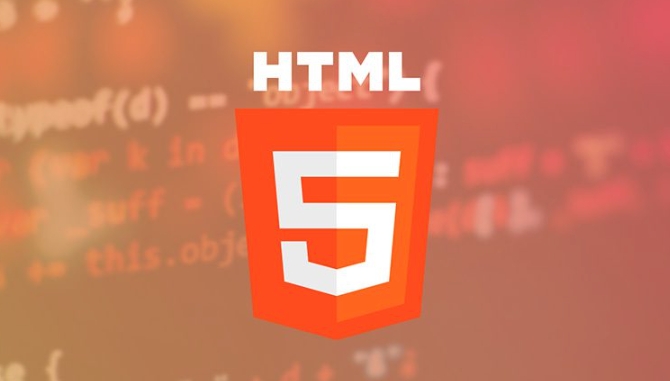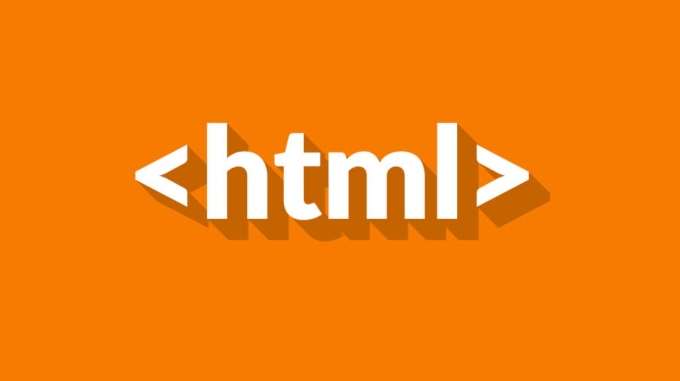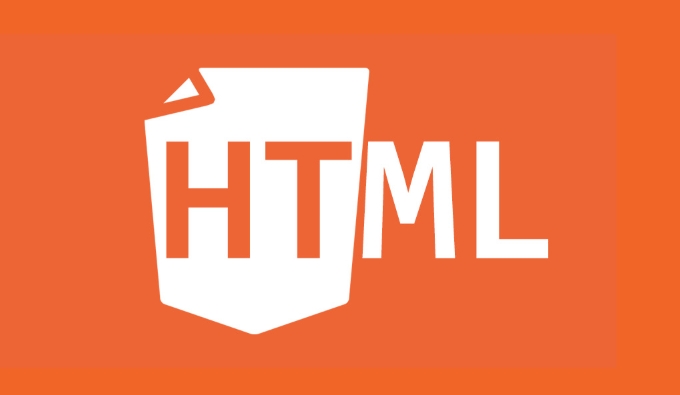How to add comments in html code for readability?
Jul 11, 2025 am 02:39 AMThe reasons for adding comments to HTML include improving code readability, facilitating post-maintenance, and helping multiple people quickly understand structural logic when collaborating. 1. Comments can be used to mark different blocks of the page, such as header and footer; 2. Explain the function or purpose of a certain piece of code; 3. Temporarily hide the code for debugging; 4. Remind others to pay attention to special processing. The correct way to add comments is to use <!-- Start comment--> and <!-- End comment--> to appear in pairs, especially for large code structures. Positions suitable for commenting include main structural divisions, special functional modules, and commented out codes. Commenting tips include keeping concise, uniform format, avoiding sensitive information, and appropriate indentation. Good annotation habits can significantly improve development efficiency and teamwork effectiveness.

Adding comments to HTML code is mainly to improve the readability of the code and post-maintenance efficiency. Especially when multiple people collaborate or project complexity is high, clear annotations can help you and others quickly understand structural logic.

Why comment in HTML?
Many people only focus on whether the function is implemented when writing HTML, but ignore whether the code itself is "easy to read". In fact, reasonable comments have several practical uses:

- Tag different blocks of the page (such as header, footer, sidebar)
- Explain the function or purpose of a certain piece of code
- Temporarily hide some code for debugging
- Remind subsequent developers to pay attention to certain special treatments
If you don’t have comments, you may not be able to understand the code you have over time.
How to add HTML comments correctly?
The comment syntax of HTML is very simple, start with <!-- , end with --> , and the middle is the explanatory text you want to write. For example:

<!-- This is the head of the website--> <header> <h1>My website</h1> </header>
In this way, others will know what this code does at a glance. For example:
<!-- Start of the main content area--> <main> <p>This is the main content</p> </main> <!-- End of main content area-->
This pair-appearing comment is very practical in large pieces of code, and the structure scope can be seen at a glance.
Which places are suitable for commenting?
Not every line needs to be commented, as it will interfere with reading. It is recommended to add comments for the following situations:
- The main structure division of the page (such as navigation bar, sidebar, footer, etc.)
- Special functional modules (such as advertising space, dynamically inserted content)
- The code that has been commented out temporarily (it is best to explain the reason)
For example:
<!-- Navigation Bar-Used Responsive Design-->
<nav class="responsive-nav">
<ul>
<li><a href="#home">Home</a></li>
<li><a href="#about">About</a></li>
</ul>
</nav>Such annotations not only mark the location, but also illustrate technical characteristics.
Some tips for using comments
- Keep it simple : Don't need to write too long sentences, just simply explain the purpose.
- Unified format : For example, all blocks end with
<!-- xxx 結(jié)束-->for easy search. - Avoid sensitive information : Do not write sensitive content such as passwords, paths, etc. in comments.
- Appropriate indentation : keeps consistent with the code structure and looks cleaner.
If you keep other people's code regularly, these small details are really useful.
Basically that's it. HTML comments are not complicated, but they are indeed a good habit. Especially in teamwork or long-term projects, spending a few minutes writing clear notes can save a lot of communication costs in the future.
The above is the detailed content of How to add comments in html code for readability?. For more information, please follow other related articles on the PHP Chinese website!

Hot AI Tools

Undress AI Tool
Undress images for free

Undresser.AI Undress
AI-powered app for creating realistic nude photos

AI Clothes Remover
Online AI tool for removing clothes from photos.

Clothoff.io
AI clothes remover

Video Face Swap
Swap faces in any video effortlessly with our completely free AI face swap tool!

Hot Article

Hot Tools

Notepad++7.3.1
Easy-to-use and free code editor

SublimeText3 Chinese version
Chinese version, very easy to use

Zend Studio 13.0.1
Powerful PHP integrated development environment

Dreamweaver CS6
Visual web development tools

SublimeText3 Mac version
God-level code editing software (SublimeText3)

Hot Topics
 How do I minimize the size of HTML files?
Jun 24, 2025 am 12:53 AM
How do I minimize the size of HTML files?
Jun 24, 2025 am 12:53 AM
To reduce the size of HTML files, you need to clean up redundant code, compress content, and optimize structure. 1. Delete unused tags, comments and extra blanks to reduce volume; 2. Move inline CSS and JavaScript to external files and merge multiple scripts or style blocks; 3. Simplify label syntax without affecting parsing, such as omitting optional closed tags or using short attributes; 4. After cleaning, enable server-side compression technologies such as Gzip or Brotli to further reduce the transmission volume. These steps can significantly improve page loading performance without sacrificing functionality.
 How has HTML evolved over time, and what are the key milestones in its history?
Jun 24, 2025 am 12:54 AM
How has HTML evolved over time, and what are the key milestones in its history?
Jun 24, 2025 am 12:54 AM
HTMLhasevolvedsignificantlysinceitscreationtomeetthegrowingdemandsofwebdevelopersandusers.Initiallyasimplemarkuplanguageforsharingdocuments,ithasundergonemajorupdates,includingHTML2.0,whichintroducedforms;HTML3.x,whichaddedvisualenhancementsandlayout
 How do I use the element to represent the footer of a document or section?
Jun 25, 2025 am 12:57 AM
How do I use the element to represent the footer of a document or section?
Jun 25, 2025 am 12:57 AM
It is a semantic tag used in HTML5 to define the bottom of the page or content block, usually including copyright information, contact information or navigation links; it can be placed at the bottom of the page or nested in, etc. tags as the end of the block; when using it, you should pay attention to avoid repeated abuse and irrelevant content.
 How do I use the tabindex attribute to control the tab order of elements?
Jun 24, 2025 am 12:56 AM
How do I use the tabindex attribute to control the tab order of elements?
Jun 24, 2025 am 12:56 AM
ThetabindexattributecontrolshowelementsreceivefocusviatheTabkey,withthreemainvalues:tabindex="0"addsanelementtothenaturaltaborder,tabindex="-1"allowsprogrammaticfocusonly,andtabindex="n"(positivenumber)setsacustomtabbing
 What is the declaration, and what does it do?
Jun 24, 2025 am 12:57 AM
What is the declaration, and what does it do?
Jun 24, 2025 am 12:57 AM
Adeclarationisaformalstatementthatsomethingistrue,official,orrequired,usedtoclearlydefineorannounceanintent,fact,orrule.Itplaysakeyroleinprogrammingbydefiningvariablesandfunctions,inlegalcontextsbyreportingfactsunderoath,andindailylifebymakingintenti
 What is the purpose of the input type='range'?
Jun 23, 2025 am 12:17 AM
What is the purpose of the input type='range'?
Jun 23, 2025 am 12:17 AM
inputtype="range" is used to create a slider control, allowing the user to select a value from a predefined range. 1. It is mainly suitable for scenes where values ??need to be selected intuitively, such as adjusting volume, brightness or scoring systems; 2. The basic structure includes min, max and step attributes, which set the minimum value, maximum value and step size respectively; 3. This value can be obtained and used in real time through JavaScript to improve the interactive experience; 4. It is recommended to display the current value and pay attention to accessibility and browser compatibility issues when using it.
 How do I use the and elements to provide a caption for an image?
Jun 24, 2025 am 12:45 AM
How do I use the and elements to provide a caption for an image?
Jun 24, 2025 am 12:45 AM
The standard way to add titles to images in HTML is to use and elements. 1. The basic usage is to wrap the image in the tag and add a title inside it, for example: this is the title of the image; 2. The reasons for using these two tags include clear semantics, convenient style control, and strong accessibility, which helps the browser, crawler and screen readers to understand the content structure; 3. Notes include that it can be placed up and down but needs to maintain logical order, cannot replace the alt attribute, and can contain multiple media elements to form a whole unit.
 What is the loading='lazy' one of the html attributes and how does it improve page performance?
Jul 01, 2025 am 01:33 AM
What is the loading='lazy' one of the html attributes and how does it improve page performance?
Jul 01, 2025 am 01:33 AM
loading="lazy" is an HTML attribute for and which enables the browser's native lazy loading function to improve page performance. 1. It delays loading non-first-screen resources, reduces initial loading time, saves bandwidth and server requests; 2. It is suitable for large amounts of pictures or embedded content in long pages; 3. It is not suitable for first-screen images, small icons, or lazy loading using JavaScript; 4. It is necessary to cooperate with optimization measures such as setting sizes and compressing files to avoid layout offsets and ensure compatibility. When using it, you should test the scrolling experience and weigh the user experience.






